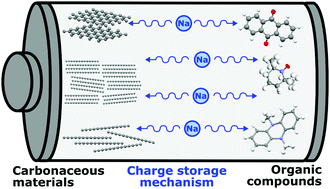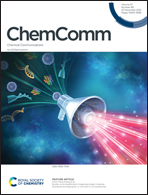Elucidating the charge storage mechanism of carbonaceous and organic electrode materials for sodium ion batteries†
Abstract
Sodium ion batteries (SIB) have received much research attention in the past decades as they are considered to be one alternative to the currently prevalent lithium ion batteries, and carbonaceous and organic compounds present two promising classes of SIB electrode materials advantaged by abundance of their constituent elements and reduced environmental footprints. To accelerate the development of these materials for SIB applications, future research directions must be guided by a thorough understanding of the charge storage mechanism. This review presents recent efforts in mechanism elucidation for these two classes of SIB electrode materials since, compared to their inorganic counterparts, they have unique challenges in material analysis. Topics covered will include characterization techniques and analytical frameworks for mechanism elucidation, emphasizing the advantages and limitations of individual experimental methodologies and providing a commentary on scientific rigor in result interpretation.



 Please wait while we load your content...
Please wait while we load your content...